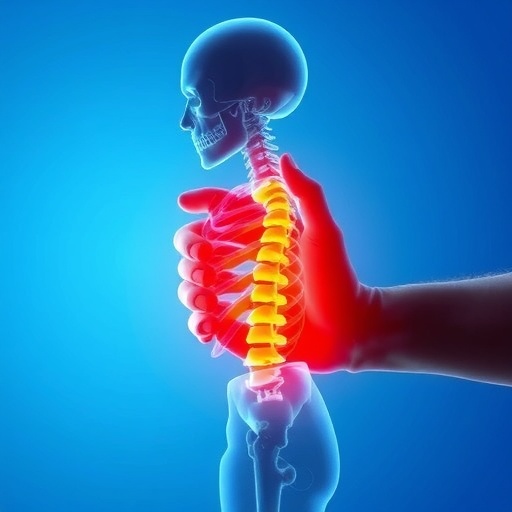Healing a fractured bone is a complex process that involves a delicate interplay of biological and mechanical factors. Traditionally, healthcare professionals have relied on periodic X-rays to monitor the healing of fractures, which can result in a lengthy and often uncertain recovery timeline for patients. Doctors typically assess bone healing through two-dimensional images taken at intervals, which can create anxiety for both patients and physicians as they await conclusive evidence of successful recovery. This reliance on X-ray imaging not only prolongs the healing process but inherently carries the risk of repeated exposure to ionizing radiation, which can have adverse long-term health consequences.
Complicating matters is the fact that healing, particularly of the tibia or shin bone, can be sluggish or stall up to a staggering 25% of the time. Various factors, including age, pre-existing health conditions such as diabetes, and even lifestyle choices, can drastically influence the rate of fracture healing. When bones do not heal appropriately, patients may face prolonged pain and ongoing medical treatment, which can severely affect their quality of life and physical capabilities.
In an innovative breakthrough, a team led by mechanical engineer Michael Hast from the University of Delaware has embarked on a project funded by a substantial grant from the National Institutes of Health. This initiative aims to transform the methods used to monitor bone healing, seeking to develop radiation-free imaging techniques that reveal issues in real-time rather than waiting for periodic checkups. By implementing advanced imaging technologies, the researchers hope to adopt a more proactive approach to patient care, which in turn could accelerate healing timelines and enhance overall recovery experiences.
At the core of this research lies Hast’s lab, which employs advanced three-dimensional computational models to assess the strength of healing bones. These models are significant because they allow for simulations of real-world mechanical stresses—like twisting or bearing weight—enabling the team to evaluate how resilient a healing fracture is over time. Up until now, these personalized models have commonly been based on computed tomography scans, which, while informative, present significant drawbacks due to their exposure to harmful ionizing radiation.
However, recent advancements in magnetic resonance imaging (MRI) technology have paved the way for a new frontier in bone imaging. Traditional MRI has always excelled at visualizing soft tissues but has struggled to provide clear images of hard, dense bone structures. The advent of ultrashort echo time MRI marks a shift in this narrative, enabling rapid and detailed imaging of healing bone fractures without the associated risks of radiation exposure. This game-changing technology represents a significant step forward in how fractures will be evaluated and monitored moving forward.
According to Hast, the capacity to perform radiation-free imaging of healing bones is revolutionary. By collecting sufficient data through these new imaging modalities, the research team anticipates identifying complications in fracture healing earlier than ever before. Such early identification could influence clinical decisions regarding treatment adjustments, including modifications to physical therapy practices and activity levels, ultimately leading to better patient outcomes.
Translating the intricate data obtained from MRI scans into computational models requires a robust collaborative effort. To achieve meaningful breakthroughs, Hast has joined forces with notable experts, including modeling specialist Hannah Dailey from Lehigh University and orthopedic surgeons from the University of Pennsylvania. This multidisciplinary approach amplifies the ingenuity behind the project, harnessing diverse expertise to ensure the created models reflect the complexities of real bone behavior under physical stress.
The team’s initial focus will be on utilizing a sheep model of bone healing, an approach which allows for controlled experimentation. The goal is to verify if MRI-derived models accurately mirror the mechanical strength of healing bones compared to traditional laboratory measurements. Following this preliminary phase, the researchers plan to broaden their scope, including human studies to investigate the efficacy of the MRI technique during tibial fracture repair surgeries.
With plans to enroll approximately 50 participants at the University of Pennsylvania, the research team is poised to track each participant for a full year. This longitudinal study aims to provide invaluable insights into the predictive capabilities of the MRI-based models concerning human fracture healing. As understanding grows, Hast and his colleagues hope their research will enable clinicians to rapidly and effectively assess the development of new bone tissue, ensuring that it is sufficiently robust to withstand ordinary daily activities and stresses.
Interestingly, recent scientific evidence has underscored the benefits of early mobilization in the recovery process for leg fractures. Hast has expressed optimism regarding the potential of their predictive modeling to provide clinicians and patients with greater confidence in the safety of resuming physical activity post-fracture. The overarching goal remains clear: developing an early warning system that can detect signs of inadequate healing so that medical professionals can adjust rehabilitation protocols promptly, ensuring patients can return to their normal lives as swiftly as possible.
As the landscape of medical imaging continues to evolve, this innovative research project holds the promise of significantly enhancing care processes and patient experiences in orthopedic medicine. With each step, researchers are discovering more about the intricacies of bone healing, paving the way for improved clinical practices and ultimately, healthier patients.
This study is funded through the NIH’s National Institute of Arthritis and Musculoskeletal and Skin Diseases, enhancing the potential for widespread impact throughout the medical community. As advanced imaging techniques pave the way for better treatment protocols, the hope is that future patients will benefit from a healthcare system that prioritizes prevention, efficiency, and patient-centric care.
Subject of Research: The development of radiation-free imaging techniques to improve bone fracture healing monitoring.
Article Title: Revolutionizing Bone Healing: The Future of Fracture Monitoring Without Radiation
News Publication Date: October 2023
Web References: University of Delaware, Michael Hast’s Lab, Lehigh University
References: N/A
Image Credits: Kathy F. Atkinson/University of Delaware




